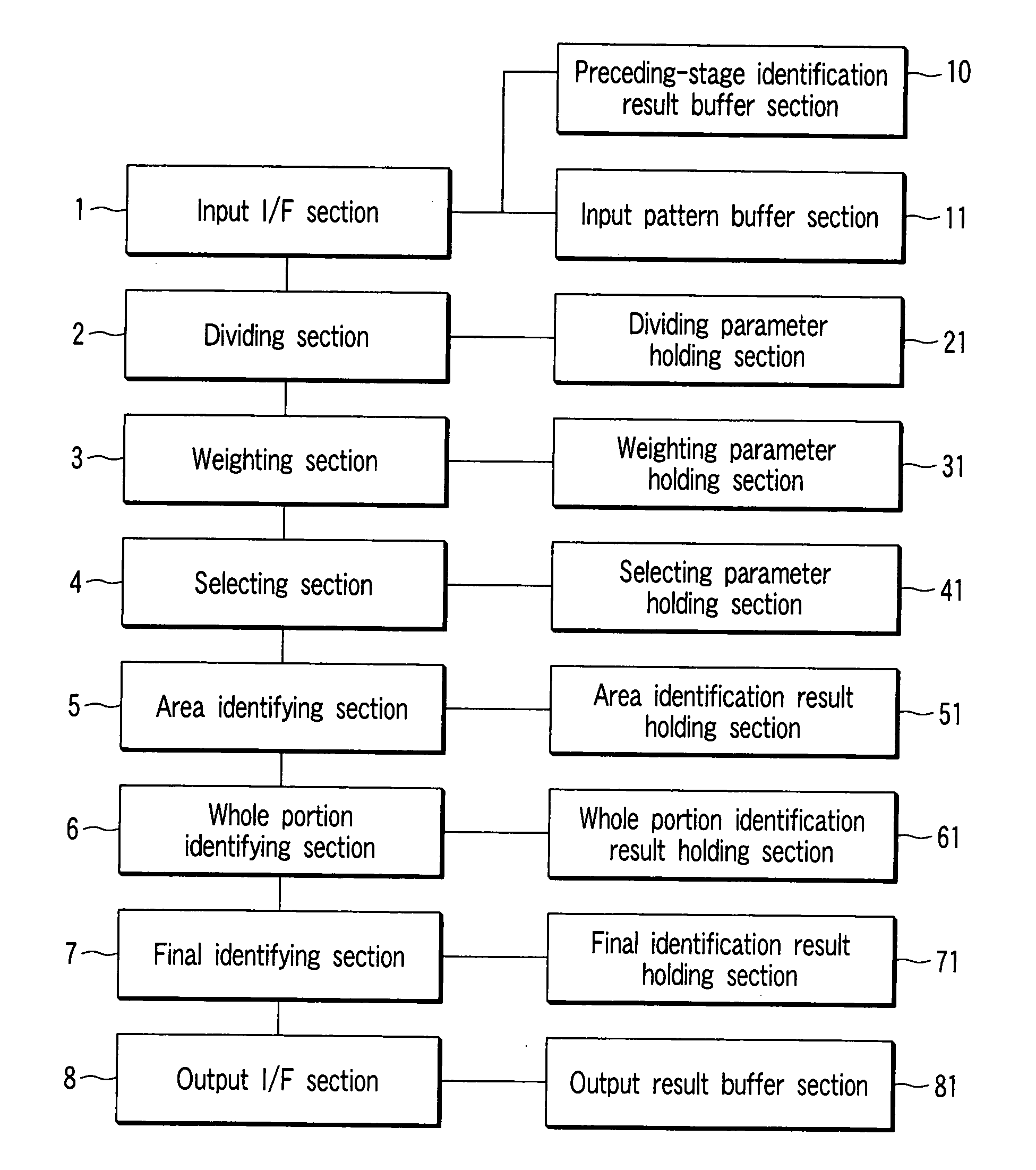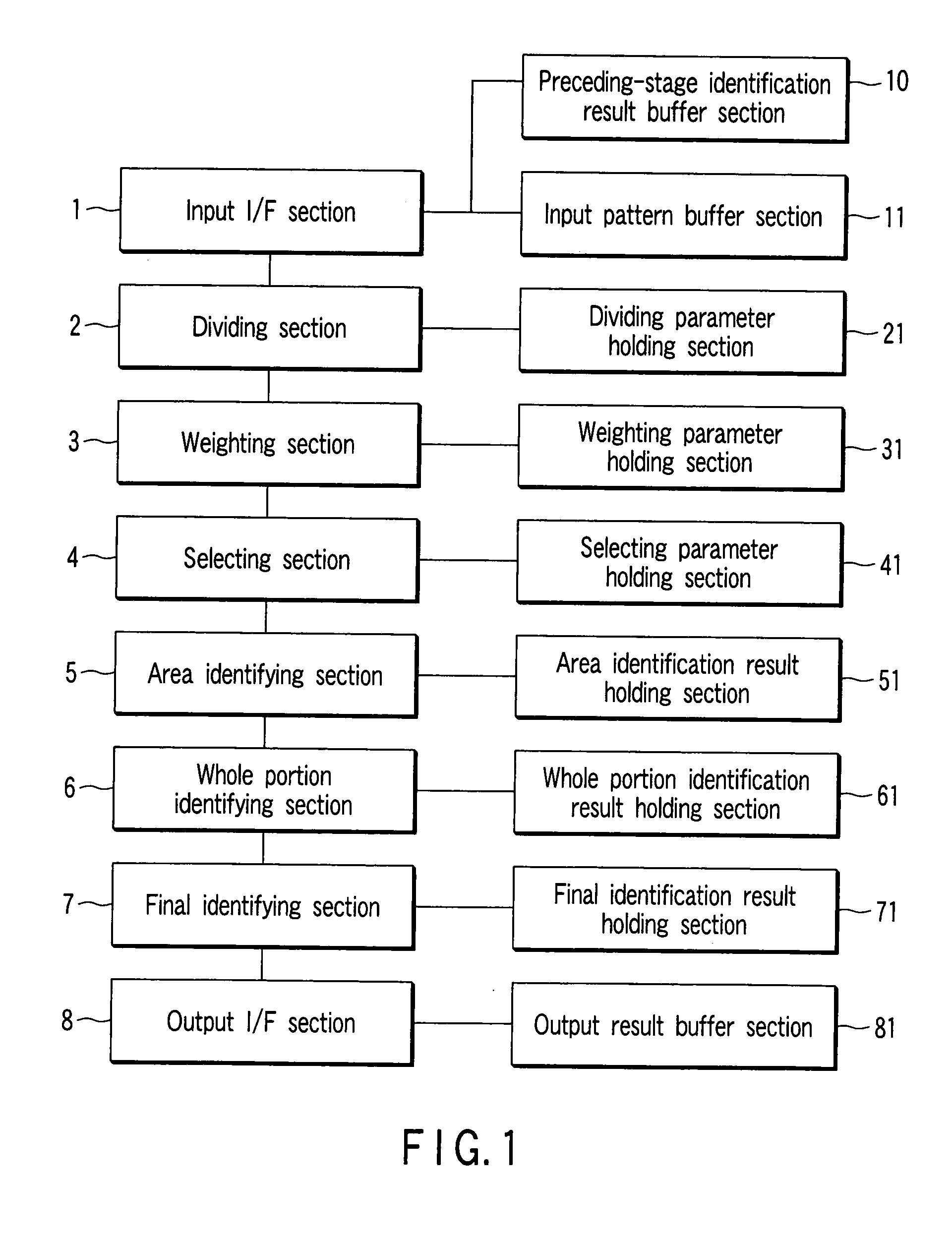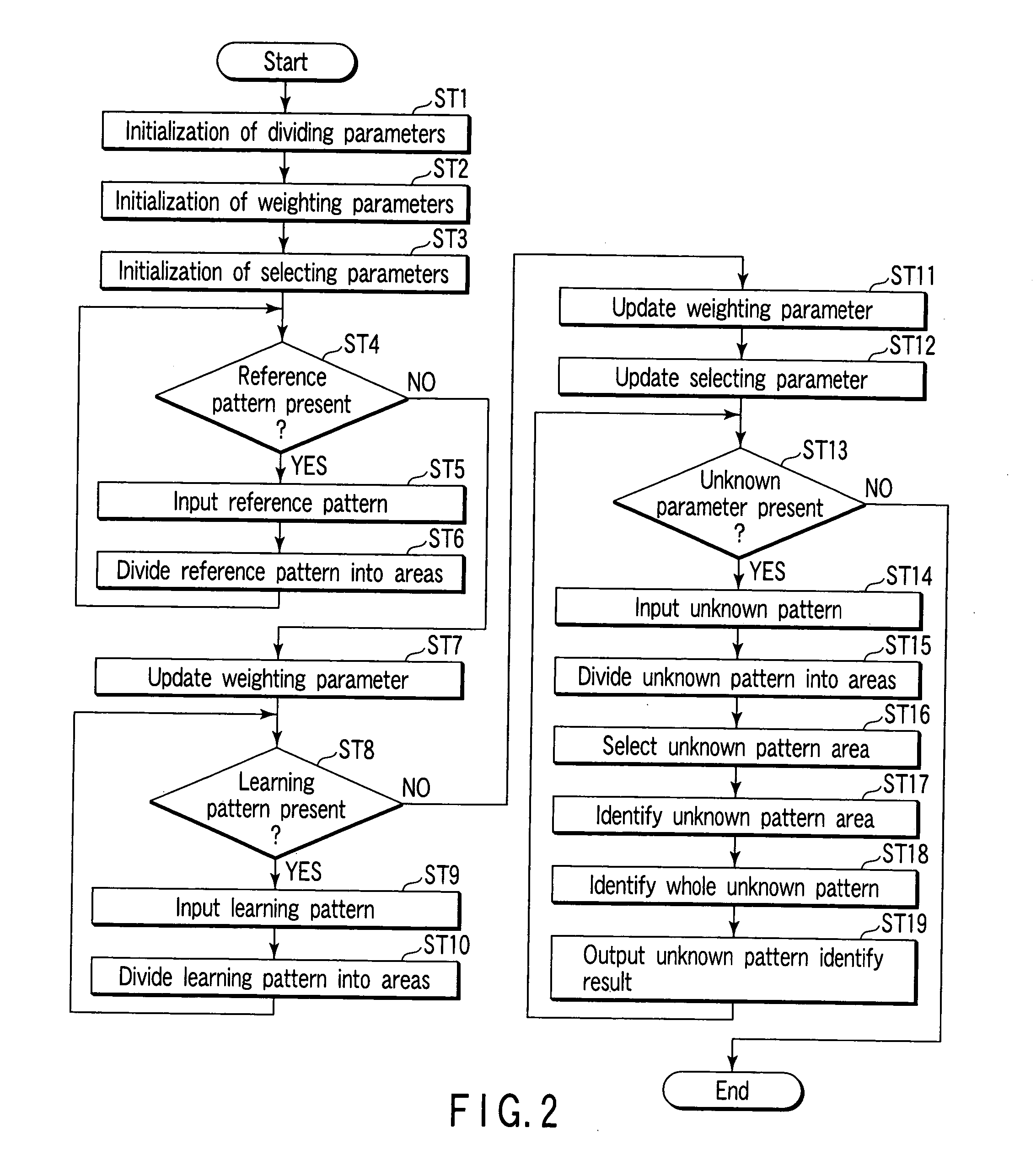Sheet identifying apparatus and sheet identifying method
a technology of identifying apparatus and identifying method, which is applied in the direction of instruments, paper-money testing devices, computing, etc., to achieve the effect of efficient estimation of classes
- Summary
- Abstract
- Description
- Claims
- Application Information
AI Technical Summary
Benefits of technology
Problems solved by technology
Method used
Image
Examples
first embodiment
[0037] First, this invention is explained below.
[0038]FIG. 1 schematically shows the configuration of a sheet identifying apparatus according to one embodiment of this invention. The sheet identifying apparatus includes an input interface (I / F) section 1 which inputs an image pattern (input pattern) acquired by optically reading an image on a sheet such as a paper sheet, a preceding-stage identification result buffer section 10 which temporarily stores the preceding-stage identification result and candidates obtained as the result of the identification process, and an input pattern buffer section 11 which temporarily stores an image pattern (input pattern) input. Further, it includes a dividing section 2 used as area dividing means for dividing the input image pattern into a plurality of areas, a dividing parameter holding section 21 which holds dividing parameters, a weighting section 3 used as weighting means for weighting the divided areas, a weighting parameter holding section 3...
second embodiment
[0078] Next, this invention is explained.
[0079]FIG. 8 is a flowchart for illustrating a sheet identifying process according to the second embodiment. Initialization of dividing parameters, initialization of weighting parameters and initialization of selecting parameters (ST1, ST2, ST3) are the same as those of the first embodiment and the explanation thereof is omitted. In the second embodiment, a random area selecting process is repeatedly performed while a learning pattern is being input and the weighting parameters are sequentially optimized based on the evaluation.
[0080] After the initialization processes of the parameters are completed, a reference pattern is input like the first embodiment (ST4 to ST6). In the second embodiment, in order to clarify the explanation, the number of classes of the pattern is set to “2” and a 2-class identification problem is dealt with. The reference pattern is a pattern used as a reference of a class which is free from an influence due to a stai...
third embodiment
[0092] Next, this invention is explained.
[0093]FIG. 10 is a flowchart for illustrating an identifying process according to the third embodiment. The parameter initialization process corresponds to the dividing parameter initialization process, weighting parameter initialization process and selection parameter initialization process and the explanation thereof is omitted here. The third embodiment has a feature that the final identification result is determined based on the majority rule, logical equation or weighting process thereof for a plurality of identification results obtained by a plurality of area selecting processes.
[0094] First, a plurality of area selection processes are performed (ST31, ST32). As the area selection algorithm, the area selection algorithm in the first embodiment or second embodiment can be used. If the number of loops is set to LOOPMAX, selecting parameters Qloop of LOOPMAX can be obtained.
Qloop (1≦loop≦LOOPMAX)
[0095] Thus, the learning phase is comple...
PUM
 Login to View More
Login to View More Abstract
Description
Claims
Application Information
 Login to View More
Login to View More - R&D
- Intellectual Property
- Life Sciences
- Materials
- Tech Scout
- Unparalleled Data Quality
- Higher Quality Content
- 60% Fewer Hallucinations
Browse by: Latest US Patents, China's latest patents, Technical Efficacy Thesaurus, Application Domain, Technology Topic, Popular Technical Reports.
© 2025 PatSnap. All rights reserved.Legal|Privacy policy|Modern Slavery Act Transparency Statement|Sitemap|About US| Contact US: help@patsnap.com



